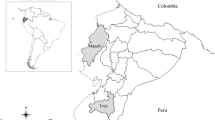Abstract
Of the variety of bird egg shapes, perhaps the most fascinating and unusual are pyriform (pear-shaped, or conical) eggs. Among oologists, there is still no consensus on what exactly caused this evolutionary and ecological adaptation. To address this, our research was aimed to develop a minimalistic mathematical model for an accurate description of the pyriform egg contour, using the minimum number of measurements. As such, egg length (L) and its maximum breadth (B) were found to be an optimal set of parameters that were easy enough to measure with the required accuracy. We tested four analytical premises that can be used for successful pyriform egg shape modelling. To validate these four model premises, images of pyriform eggs characteristic of 32 species were used. As a result, we derived a novel mathematical dependence that we called the ‘pyriform model with two parameters’. Based on this model, it is feasible to geometrically reconstruct any pyriform egg profile under study using only two egg measurements, i.e., L and B. Since pyriform eggs are characteristic of wild bird species that are most often investigated in the field, the measurement of only two parameters minimizes the time spent and, accordingly, the stress factor on the animals. The least error estimate for the new model was 3.9%, which turned out to be even more accurate than that of the previously developed model with three parameters.









Similar content being viewed by others
References
Augé C 1897–1904 Nouveau Larousse illustré (Paris: Librairie Larousse)
Baker DE 2002 A geometric method for determining shape of bird eggs. Auk 119 1179–1186
Barta Z and Székely T 1997 The optimal shape of avian eggs. Funct. Ecol. 11 656–662
Biggins JD, Thompson JE and Birkhead TR 2018 Accurately quantifying the shape of birds’ eggs. Ecol. Evol. 8 9728–9738
Birkhead TR 2016 The most perfect thing: inside (and outside) a bird’s egg (New York: Bloomsbury Publishing)
Blackburn TM 1991 An interspecific relationship between egg size and clutch size in birds. Auk 108 973–977
Carter TC 1968 The hen’s egg: a mathematical model with three parameters. Br. Poult. Sci. 9 165–171
Carter TC and Jones RM 1970 The hen’s egg: shell shape and size parameters and their interrelations. Br. Poult. Sci. 11 179–188
Christians JK 2002 Avian egg size: variation within species and inflexibility within individuals. Biol. Rev. 77 1–26
Makridakis S, Andersen A, Carbone R, et al. 1982 The accuracy of extrapolation (time series) methods: results of a forecasting competition. Int. J. Forecast. 1 111–153
Mónus F and Barta Z 2005 Repeatability analysis of egg shape in a wild tree sparrow (Passer montanus) population: a sensitive method for egg shape description. Acta Zool. Acad. Sci. Hung. 51 151–162
Narushin VG 1997 The avian egg: geometrical description and calculation of parameters. J. Agric. Eng. 68 201–205
Narushin VG 2001 Shape geometry of the avian egg. J. Agric. Eng. 79 441–448
Narushin VG, Romanov MN, Lu G, et al. 2020 Digital imaging assisted geometry of chicken eggs using Hügelschäffer’s model. Biosyst. Eng. 197 45–55
Narushin VG, Romanov MN and Griffin DK 2021 Egg and math: introducing a universal formula for egg shape. Ann. N. Y. Acad. Sci. 1505 169–177
Narushin VG, Romanov MN and Griffin DK 2022a Delineating an ovoidal egg shape by length and breadth: a novel two-parametric mathematical model. Biosyst. Eng. 224 336–345
Narushin VG, Griffin AW, Romanov MN, et al. 2022b Measurement of the neutral axis in avian eggshells reveals which species conform to the golden ratio. Ann. N. Y. Acad. Sci. 1517 143–153
Nishiyama Y 2012 The mathematics of egg shape. Int. J. Pure Appl. Math. 78 679–689
Petrović M and Obradović M 2010 The complement of the Hugelschaffer’s construction of the egg curve; in 25th National and 2nd International Scientific Conference moNGeometrija 2010 (Ed) M Nestorović (Belgrade, Serbia: Serbian Society for Geometry and Graphics) pp 520–531
Preston FW 1953 The shapes of birds’ eggs. Auk 70 160–182
Preston FW 1968 The shapes of birds’ eggs: mathematical aspects. Auk 85 454–463
Preston FW 1969 Shapes of birds’ eggs: extant North American families. Auk 86 246–264
Romanoff AL and Romanoff AJ 1949 The avian egg (New York: John Wiley)
Rosenbeger J, Pytlak K, Łukaszewicz E, et al. 2021 Variation in bird eggs – Does female factor, season, and laying order impact the egg size, pigmentation, and eggshell thickness of the eggs of capercaillie? Animals 11 3454
Schönwetter M 1960–1992 Handbuch der Oologie Vols 1–4 (Ed) Meise W (Berlin: Akademie Verlag)
Severa L, Nedomová Š, Buchar J, et al. 2013 Novel approaches in mathematical description of hen egg geometry. Int. J. Food Prop. 16 1472–1482
Shi P, Gielis J and Niklas KJ 2022 Comparison of a universal (but complex) model for avian egg shape with a simpler model. Ann. N. Y. Acad. Sci. 1514 34–42
Stein LR and Badyaev AV 2011 Evolution of eggshell structure during rapid range expansion in a passerine bird. Funct. Ecol. 25 1215–1222
Thompson JE 2020 Egg shape in birds, PhD thesis, University of Sheffield
Todd PH and Smart IHM 1984 The shape of birds’ eggs. J. Theor. Biol. 106 239–243
Troscianko J 2014 A simple tool for calculating egg shape, volume and surface area from digital images. Ibis 156 874–878
Funding
This research did not receive any specific grant from funding agencies in the public, commercial, or not-for-profit sectors.
Author information
Authors and Affiliations
Corresponding authors
Ethics declarations
Conflict of interest
The authors declare that they have no conflict of interest, financial or otherwise, that could have influenced this paper.
Additional information
Corresponding editor: Renee M Borges
Rights and permissions
About this article
Cite this article
Narushin, V.G., Romanov, M.N. & Griffin, D.K. A novel model for eggs like pears: How to quantify them geometrically with a mathematical formula of two parameters?. J Biosci 48, 35 (2023). https://doi.org/10.1007/s12038-023-00361-3
Received:
Accepted:
Published:
DOI: https://doi.org/10.1007/s12038-023-00361-3




